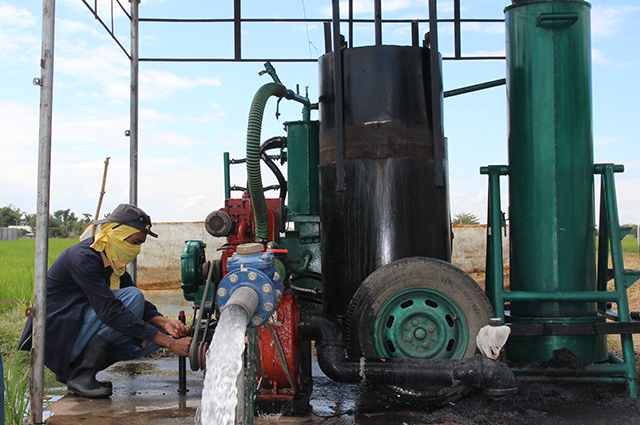 Agricultural wastes such as rice husks are now used as a source of energy that helps advance the agriculture industry, particularly on rice mechanization and post production operations.
Agricultural wastes such as rice husks are now used as a source of energy that helps advance the agriculture industry, particularly on rice mechanization and post production operations.
In a presentation given by Engr. Eden C. Gagelonia of PhilRice during the 9th ASEAN Plus Three (China, Japan, and Korea) Forum on Biomass Energy held in Chengdu, China, on November 8-11, it was reported that the Philippines produces an average of 2 million metric tons of rice husks annually.
Rice husks are sold at P1.80/kg. Gagelonia said that in the past, these “wastes” were just being dumped at the back of rice mills or burned on road sides.
“A kilo of rice husk basically contains about 3,000 kcal of heat energy and can provide sufficient amount of clean gaseous fuel when gasified,” Gagelonia explained.
“Converting this available biomass waste into energy by gasification can provide about 25 PJ of energy which can be utilized for various heat and power applications, especially in rice farming and rural-based operations,” she added.
Rice biomass also helps in the restoration of the soil and contributes to carbon sequestration for greenhouse gas mitigation.
 Gagelonia also revealed during the forum that PhilRice developed a rice husk gasifier engine system that converts biomass into different applications such as thermal (cooking, baking drying, and steam generation), mechanical (irrigation pump and rice mill), and electrical power (lighting and power supply infrastructures). Gasifiers also provide clean energy for domestic and cottage industry.
Gagelonia also revealed during the forum that PhilRice developed a rice husk gasifier engine system that converts biomass into different applications such as thermal (cooking, baking drying, and steam generation), mechanical (irrigation pump and rice mill), and electrical power (lighting and power supply infrastructures). Gasifiers also provide clean energy for domestic and cottage industry.
Furthermore, wastes produced by the gasifier can be used by farmers as soil conditioner and as element for organic fertilizer.
To strengthen the application of decentralized system of biomass energy, Gagelonia suggested that the government must formulate supportive policies for the adoption and adaptation of the developed technologies in the locality.
For more information on PhilRice machines that use biomass energy, click here or contact the PhilRice Text Center at 0920-9111398.




